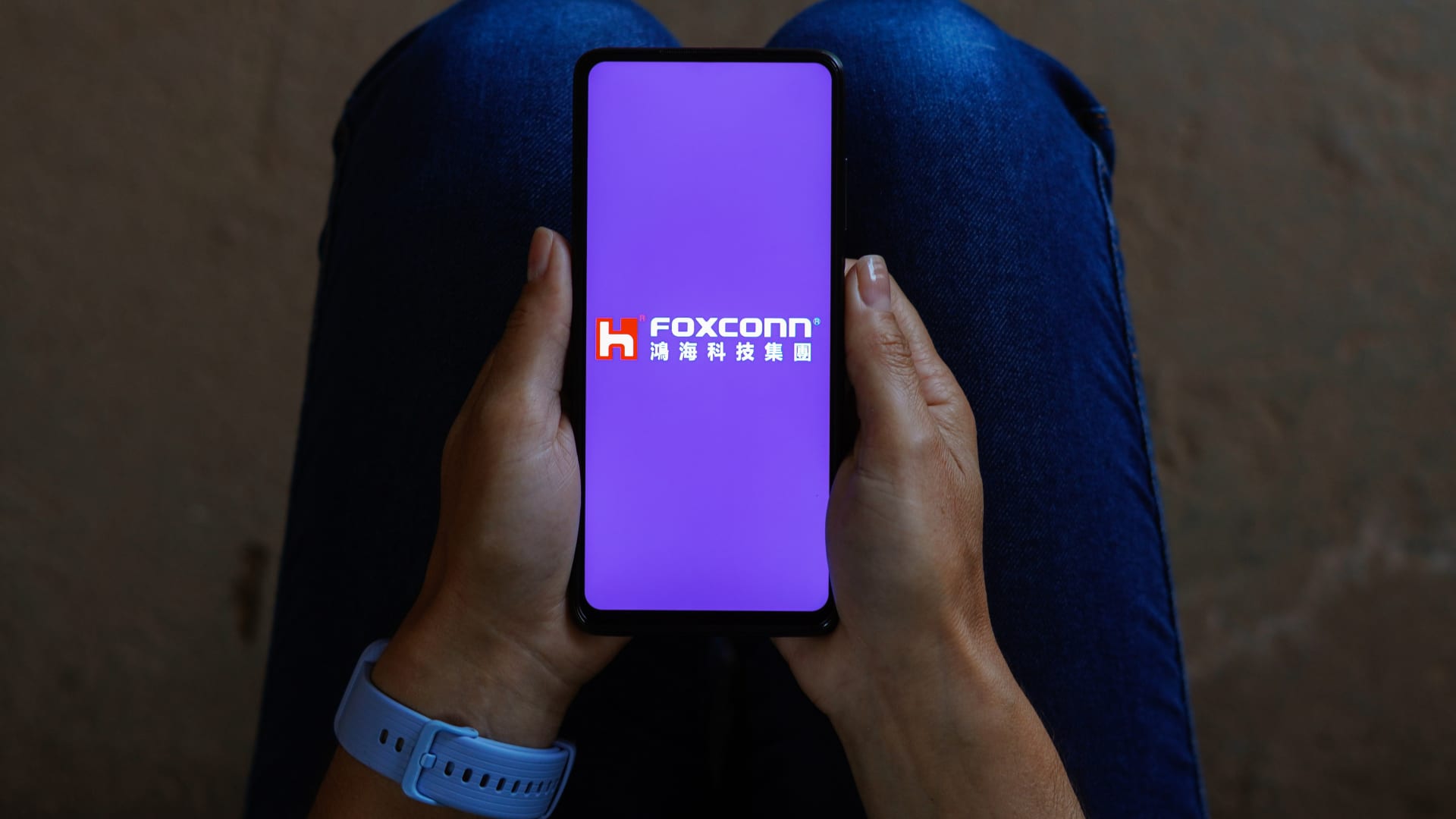This month, Foxconn pulled out of its joint venture with Vedanta. The two sides “mutually agreed to part ways,” Foxconn said in a statement at the time.
Sopa Images | Lightrocket | Getty Images
Foxconn is best known as the main assembler of Apple’s iPhones. But in last couple of years, the Taiwanese firm has made a push into semiconductors, betting that the rise of technologies like artificial intelligence will boost demand for these chips.
But Foxconn’s semiconductor foray has had a tough start, highlighting the difficulty for new players to enter a market dominated by established firms with huge experience and a highly intricate supply chain.
“The industry presents newcomers with high barriers to entry, mainly high levels of capital intensity and access to coveted intellectual property,” Gabriel Perez, ICT analyst at BMI, a unit at Fitch Group, told CNBC via email.
“Established players such as TSMC, Samsung or Micron count with several decades of R&D (research and development), process engineering and trillions of dollars in investment to reach their current capabilities.”
Why is Foxconn getting into semiconductors?
Foxconn, officially known as Hon Hai Technology Group, is a contract electronics manufacturer that assembles consumer products like iPhones. But in the last two years, it has stepped up its presence in semiconductors.
In May 2021, it formed a joint venture with Yageo Corporation, which makes various types of electronic components. That same year, Foxconn bought a chip plant from Taiwanese chipmaker Macronix.
The biggest ramp-up in effort came last year when Foxconn agreed with Indian metals-to-oil conglomerate Vedanta to set up a semiconductor and display production plant in India as part of a $19.5 billion joint venture.
Neil Shah, vice president of research at Counterpoint Research, said Foxconn’s push into semiconductors is about diversifying its business, and the company’s decision to launch an electric car unit is part of that plan. Its aim is to become a “one stop shop” for electronics and automotive companies, Shah said.
If Foxconn could assemble electronics and manufacture chips, it would be a very unique and competitive business.
Why India?
Foxconn looked to India for its joint venture with Vedanta because the country’s government is looking to boost its domestic semiconductor industry and bring manufacturing on shore.
“Foxconn’s decision to establish a JV in India responds to two key trends – one of them being the market’s growing role as a consumer electronics manufacturing hub, the second one being India’s ambitions – mirroring other major markets such as the US, the EU and Mainland China – to develop its domestic semiconductor industry through public subsidies and regulatory incentives,” BMI’s Perez said.
What went wrong for Foxconn?
This month, Foxconn pulled out of its joint venture with Vedanta. The two sides “mutually agreed to part ways,” Foxconn said in a statement at the time.
“There was recognition from both sides that the project was not moving fast enough, there were challenging gaps we were not able to smoothly overcome, as well as external issues unrelated to the project,” Foxconn said.
Deadlocked talks with European chipmaker STMicroelectronics, which was the technology partner for the project, was one major reason for the venture’s failure, Reuters reported this month.
Foxconn and Vedanta wanted to license the technology from STMicro and India wanted the firm to have a stake in the joint venture, but the European chipmaker did not, Reuters reported.
It’s hard to break into chipmaking
Foxconn’s hurdles point to a broader issue — it’s hard for newcomers to get into semiconductor manufacturing.
The manufacturing of chips is dominated by one player — Taiwan Semiconductor Manufacturing Company, better known as TSMC — which has a 59% market share in the foundry segment, according to Counterpoint Research.
TSMC doesn’t design its own chips. Instead, it makes these components for other companies like Apple. TSMC has had more than two decades of experience and billions of dollars of investment to get to where it is.
TSMC also relies on a complex supply chain of companies that make critical tools to allow it to manufacture the most advanced chips in the world.
Foxconn and Vedanta’s effort appeared to rely heavily on STMicro, but once the European company bailed, the joint venture was without much expertise in semiconductors.
“Both companies … lacked the core competency of manufacturing a chip,” Counterpoint Research’s Shah said, adding that they were dependent on third-party technology and intellectual property.
Foxconn’s attempts to crack the semiconductor space highlight how difficult it is for a new entrant to do so — even for a $47.9 billion giant.
“The semiconductor market is highly concentrated with few players which have taken more than two decades to evolve to this point,” Shah said, adding that there are high barriers to entry, such as large amounts of investment and specialized labor.
“On an average, it takes more than two decades to be at the level of skill and scale to be a successful semiconductor manufacturing (fab) company.”

